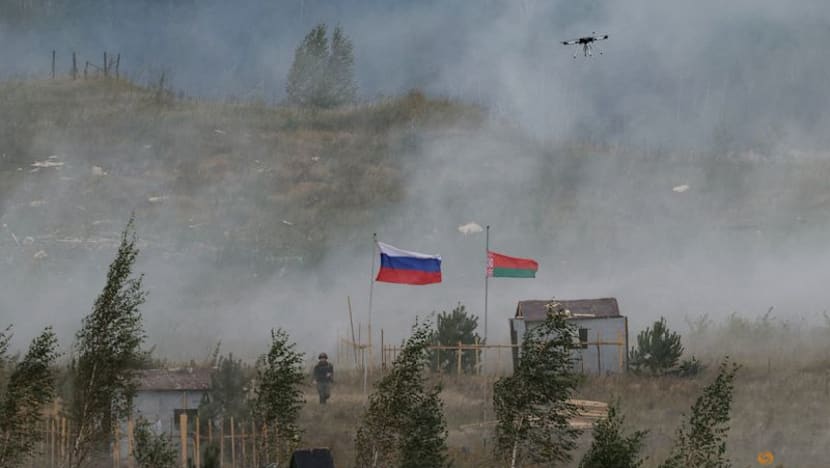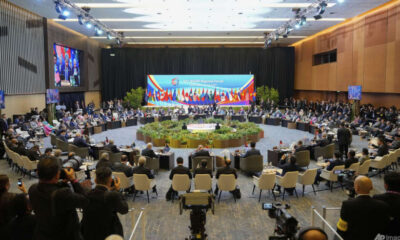World
Russia and Belarus Conduct Nuclear Weapons Drills Amid Tensions

On September 16, 2023, Belarusian leader Alexander Lukashenko announced that Russia and Belarus are conducting rehearsals for the launch of Russian tactical nuclear weapons as part of joint military exercises. The drills, which are known as the Zapad (West) exercises, are intended to demonstrate combat readiness, but they have raised concerns among neighbouring countries.
State media reported that the exercises involve significant military assets, including the Oreshnik hypersonic missile, which was test-fired during the ongoing conflict in Ukraine. Russian President Vladimir Putin met with high-ranking military officials in Nizhny Novgorod, where part of the drills took place. He stated that approximately 100,000 personnel and 10,000 pieces of equipment are involved in the exercises.
Purpose of the Exercises
Putin emphasized that these drills are crucial for ensuring the “unconditional protection of the sovereignty and territorial integrity of the Union State,” referring to the alliance between Russia and Belarus. Western military analysts interpret these exercises as an attempt to intimidate European nations, coming shortly after NATO forces intercepted Russian drones that entered Polish airspace.
Belarus, which shares borders with Ukraine and NATO member states such as Poland, Lithuania, and Latvia, is currently hosting Russian tactical nuclear weapons under Moscow’s command. Lukashenko defended the drills, asserting that their inclusion of nuclear weapons was simply a part of military preparedness. “We are practising everything there. They (the West) know this too, we are not hiding it,” he stated, while maintaining that Minsk does not intend to threaten anyone.
Details of the Military Drills
The Belarusian Defence Ministry confirmed that the drills would incorporate the use of tactical nuclear weapons and the deployment of Russia’s Oreshnik intermediate-range ballistic missile. Putin has indicated that these missiles, which he claims are difficult to intercept, could be stationed in Belarus by the second half of 2025.
In a related development, U.S. President Donald Trump has begun to strengthen ties with Lukashenko, who has historically been viewed unfavourably by the West. Recently, Trump eased some sanctions on Belarus in exchange for the release of 52 prisoners, including political opponents. U.S. military officials observed parts of the Zapad exercises in Belarus on September 16.
As part of the broader military drills, Russian strategic bombers, specifically the Tu-160, practiced launching cruise missiles over the Barents Sea, supported by MiG-31 fighter jets. In Murmansk, marines engaged in exercises to repel an amphibious landing using helicopters and drones. Additionally, ships from Russia’s Baltic Fleet and mobile launchers in Kaliningrad conducted cruise missile tests, while ground troops focused on locating enemy forces through reconnaissance systems.
The ongoing Zapad exercises, marked by their display of military might, highlight the increasing tensions in the region and the strategic posturing by both Russia and Belarus as they navigate their geopolitical landscape.
-

 Lifestyle3 months ago
Lifestyle3 months agoHumanism Camp Engages 250 Youths in Summer Fest 2025
-

 Sports3 months ago
Sports3 months agoDe Minaur Triumphs at Washington Open After Thrilling Comeback
-

 Business4 months ago
Business4 months agoKenvue Dismisses CEO Thibaut Mongon as Strategic Review Advances
-

 Sports4 months ago
Sports4 months agoTupou and Daugunu Join First Nations Squad for Lions Clash
-

 Top Stories4 months ago
Top Stories4 months agoColombian Senator Miguel Uribe Shows Signs of Recovery After Attack
-

 World4 months ago
World4 months agoASEAN Gears Up for Historic Joint Meeting of Foreign and Economic Ministers
-

 Business4 months ago
Business4 months agoOil Prices Surge Following New EU Sanctions on Russia
-

 Health3 months ago
Health3 months agoNew Study Challenges Assumptions About Aging and Inflammation
-

 Entertainment3 months ago
Entertainment3 months agoDetaşe-Sabah Violin Ensemble Captivates at Gabala Music Festival
-

 Entertainment3 months ago
Entertainment3 months agoBaku Metro Extends Hours for Justin Timberlake Concert
-

 Business4 months ago
Business4 months agoU.S. House Approves Stablecoin Bill, Sends to Trump for Signature
-

 Top Stories4 months ago
Top Stories4 months agoRethinking Singapore’s F&B Regulations Amid Business Closures









